Grievance Letter Samples
-

Grievance Letter to College
download now -
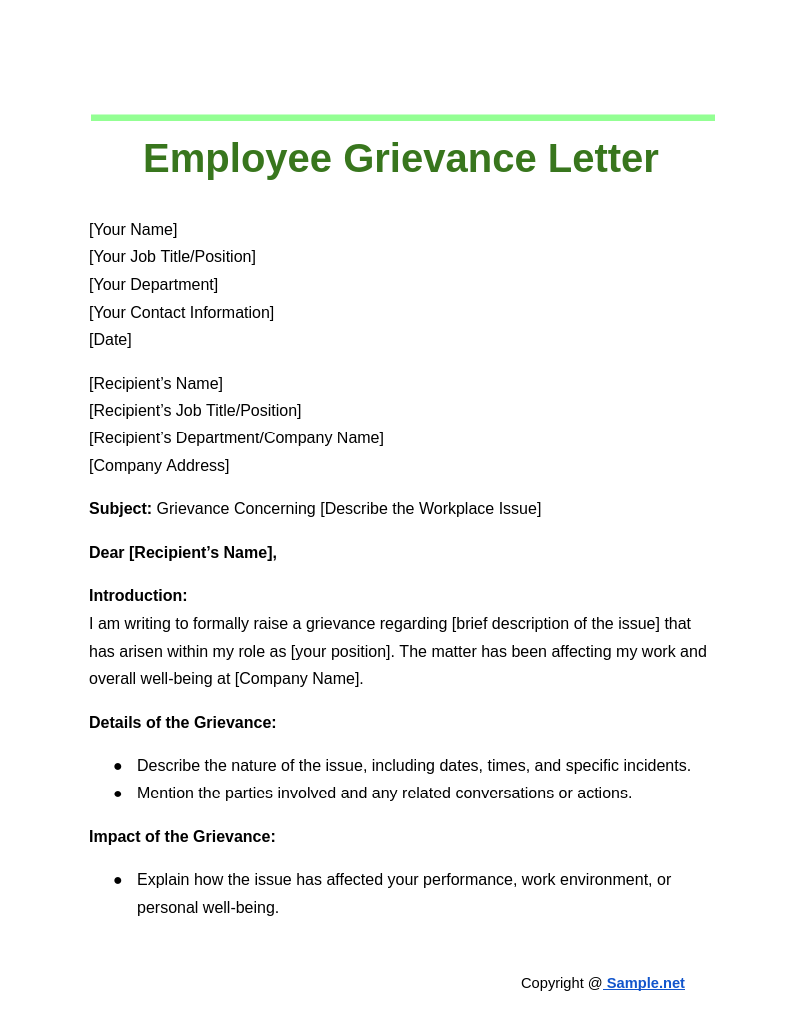
Employee Grievance Letter
download now -
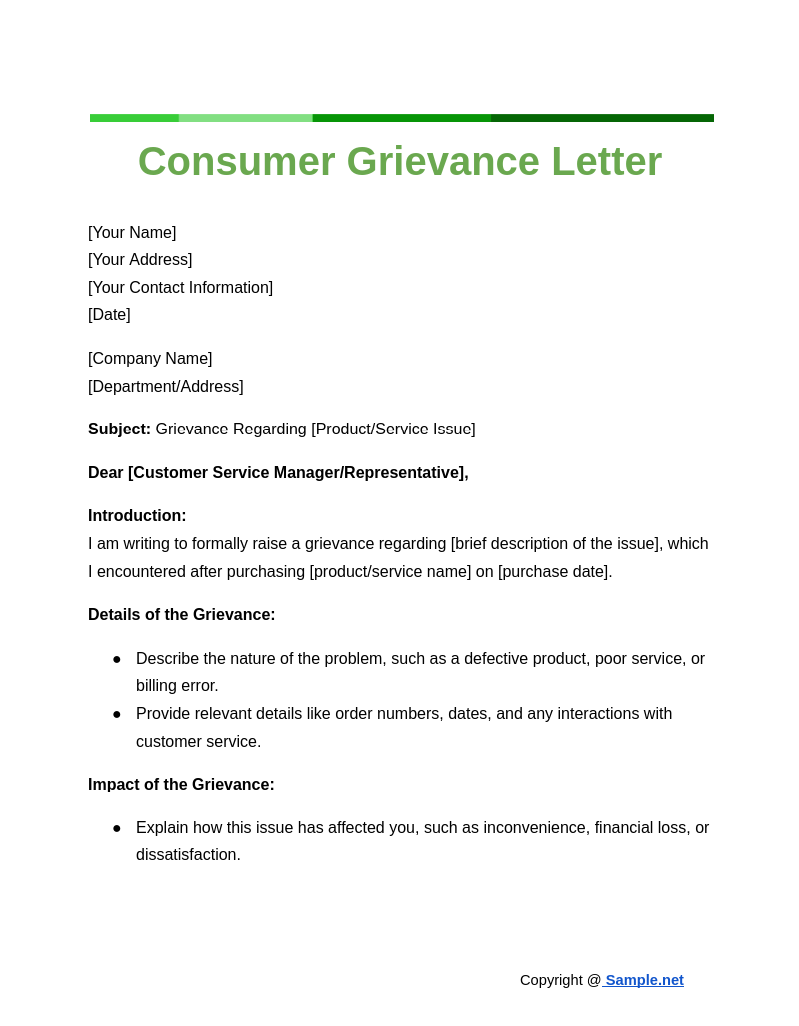
Consumer Grievance Letter
download now -

Apartment Grievance Letter
download now -
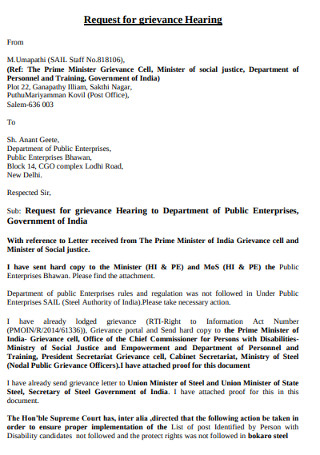
Request for Grievance Hearing Letter
download now -

Formal Grievance Letter
download now -
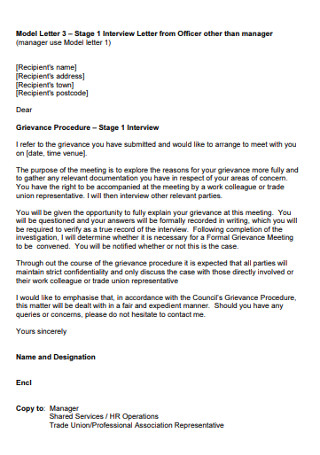
Office Manager Grievance Letter
download now -
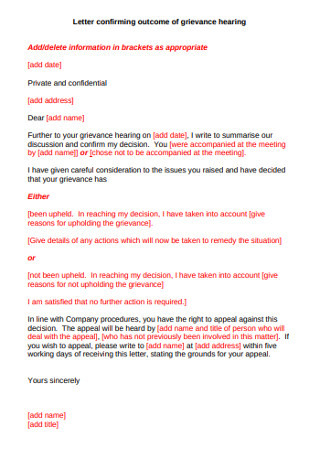
Confirming Outcome of Grievance Hearing Letter
download now -
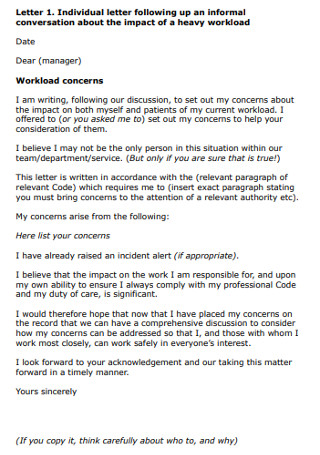
Individual Grievance Letter
download now -
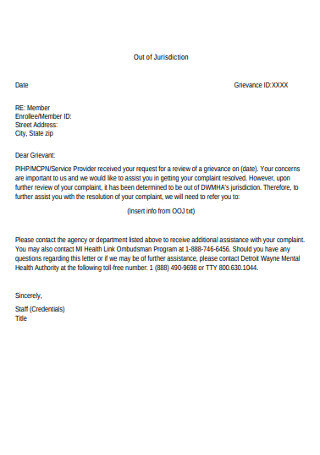
Jurisdiction Grievance Letter
download now -
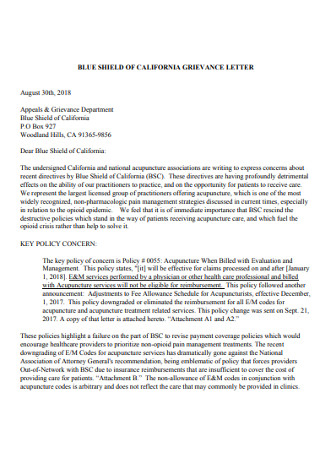
Sample Grievance Letter
download now -
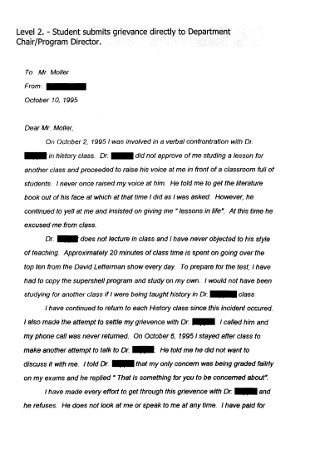
Student Grievance Letter
download now -

Basic Grievance Letter Templates
download now -
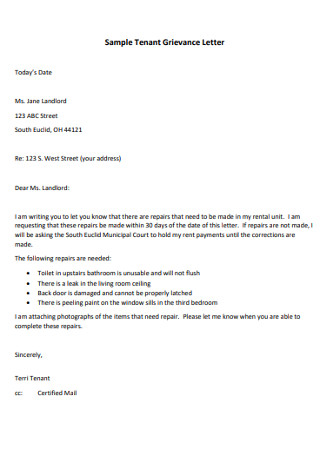
Sample Tenant Grievance Letter
download now -
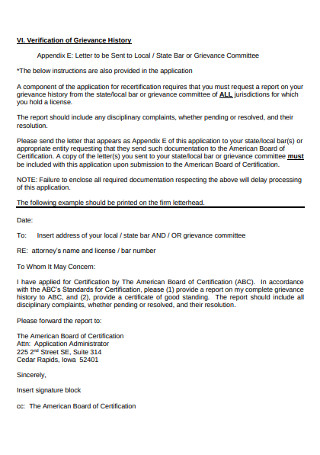
Verification of Grievance History Letter
download now -

Raising a Grievance Letter Template
download now -
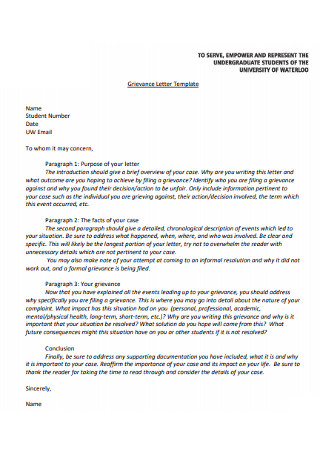
Grievance Letter Template
download now -
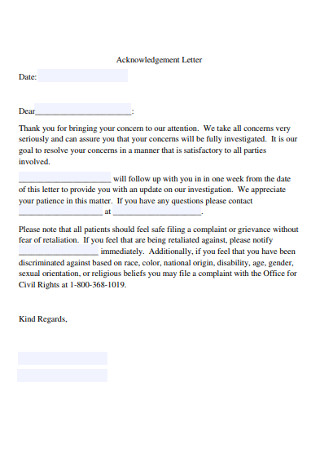
Grievance Acknowledgement Letter
download now -
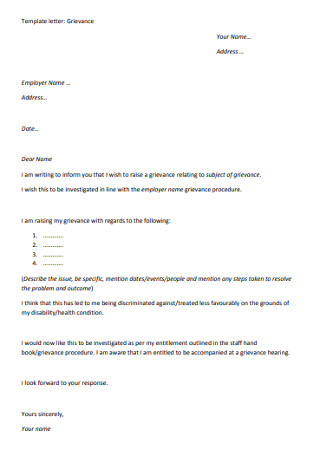
Employer Grievance Letter
download now -

Grievance Complaint Letter Checklist
download now -
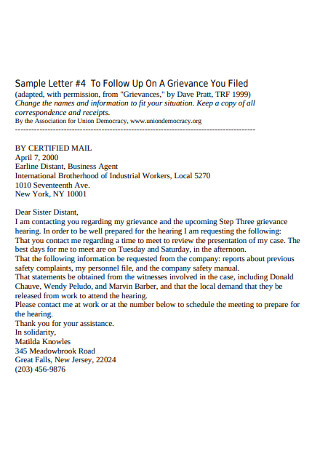
Sample Grievance Letter Template
download now -

Grievance Meeting Letter
download now -
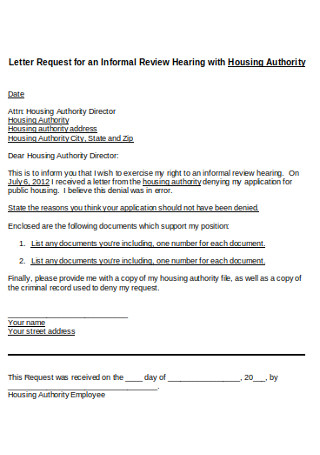
Housing Authority Grievance Letter
download now -
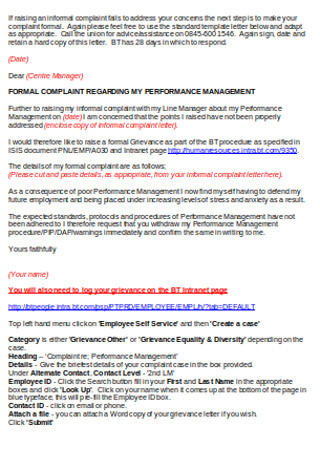
Grievance Complaint Letter
download now
FREE Grievance Letter s to Download
Grievance Letter Format
Grievance Letter Samples
What is a Grievance Letter?
When Should You File a Grievance Letter?
How to Create a Grievance Letter?
FAQS
Who should receive the grievance letter?
What details should be included in a grievance letter?
How long should a grievance letter be?
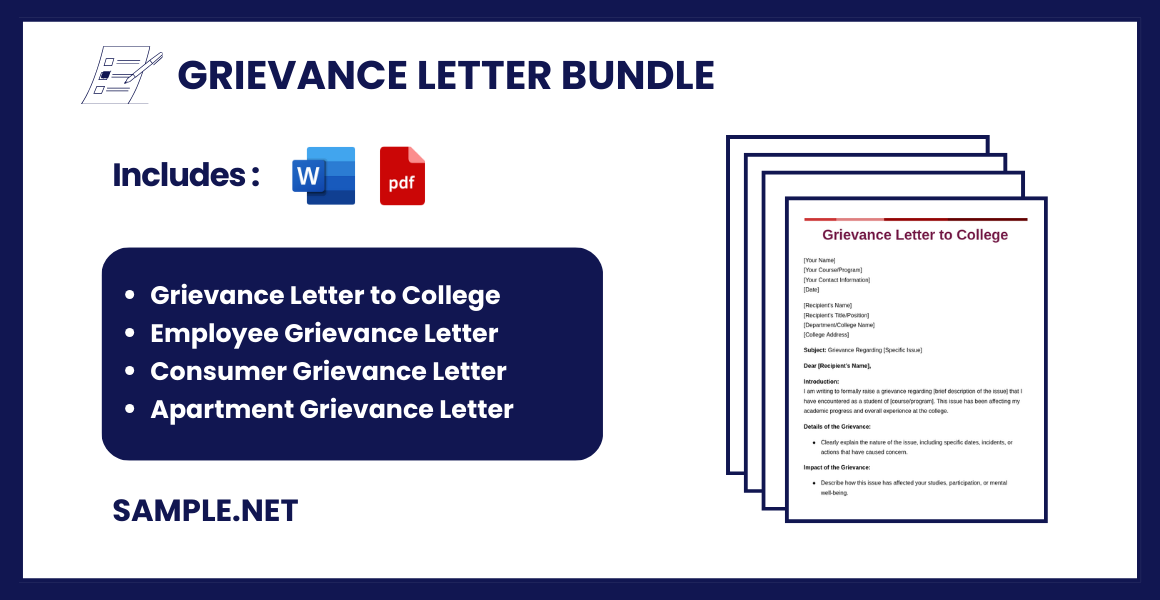
Download Grievance Letter Bundle
Grievance Letter Format
[Your Name]
[Your Job Title/Position]
[Your Department]
[Your Contact Information]
[Date]
[Recipient’s Name]
[Recipient’s Job Title/Position]
[Recipient’s Department/Company Name]
[Company Address]
Subject: Grievance Concerning [Issue]
Dear [Recipient’s Name],
Introduction:
I am writing to formally raise a grievance concerning [brief description of the issue]. I believe this matter needs urgent attention as it has impacted [state how it has affected you or your work environment].
Body:
Details of the Grievance:
- Clearly describe the nature of the grievance.
- Include dates, times, locations, and any other relevant details.
- Mention any specific incidents, interactions, or behaviors that contribute to the grievance.
Impact of the Grievance:
- Explain how the issue has affected your work performance, mental well-being, or overall workplace atmosphere.
- Provide specific examples that demonstrate the negative impact.
Efforts to Resolve the Issue:
- Mention any steps you have already taken to resolve the issue.
- Include any discussions with colleagues, supervisors, or HR personnel.
Expected Resolution:
- Clearly state what you expect as a resolution.
- Include any specific actions or changes you believe are necessary to address the grievance.
Attachments:
If you have any supporting documents, such as emails, messages, or reports, mention them here and include them as attachments.
Conclusion:
I trust that you will take this grievance seriously and initiate the necessary steps to resolve the issue promptly. I am willing to meet with you to discuss this matter further.
Thank you for your attention and understanding.
Sincerely,
[Your Signature (if submitting a hard copy)]
[Your Name]
What is a Grievance Letter?
A grievance letter is a formal written complaint submitted by an employee to their employer or HR department, addressing specific issues like unfair treatment, harassment, safety violations, or policy breaches. It serves as an official channel to communicate grievances and seek corrective action. You can also see more on Petition Letter.
When Should You File a Grievance Letter?
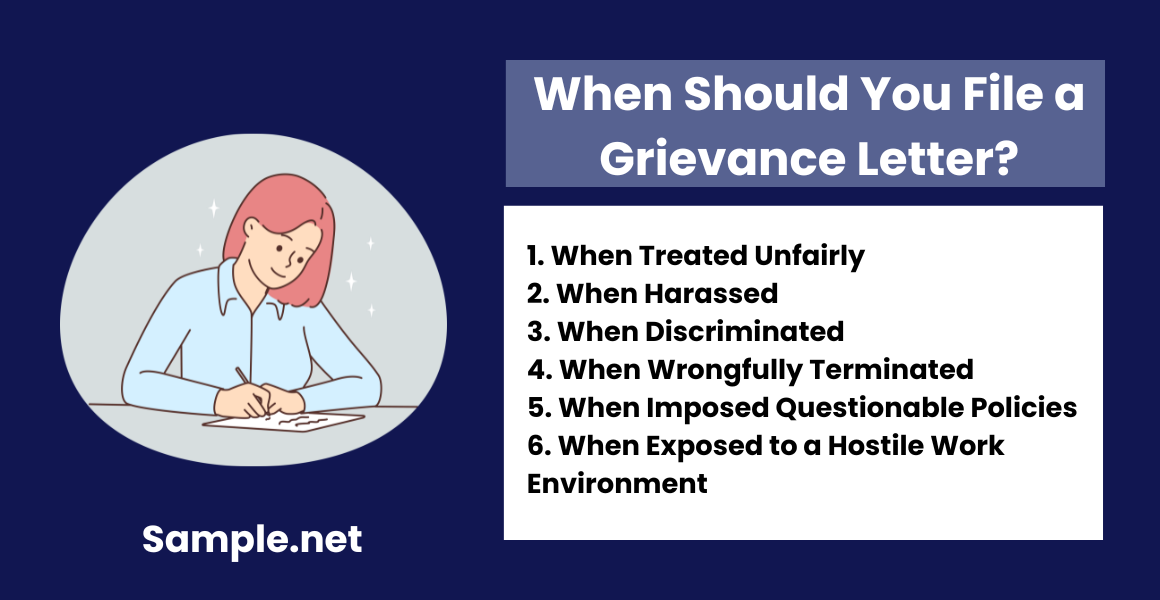
The Equal Employment Opportunity Committee (EEOC) keeps a detailed record of all the escalated grievance charges from different organizations. Its main goal is to enforce employee rights and to combat workplace discrimination. As of 2019, the EEOC received more than 70,000 charges for workplace discrimination. The number, alone, may seem alarming but it is actually at its lowest since 1997. The decreasing number of cases may mean two things. One, workplaces are becoming more accepting of differences. Two, there is confusion on when to file for a trial. The latter may be too pessimistic, but possible. To clear the air out, here are some of the circumstances of when you should call for help by writing a grievance letter. You can also see more on Adjustment Letters.
How to Create a Grievance Letter?
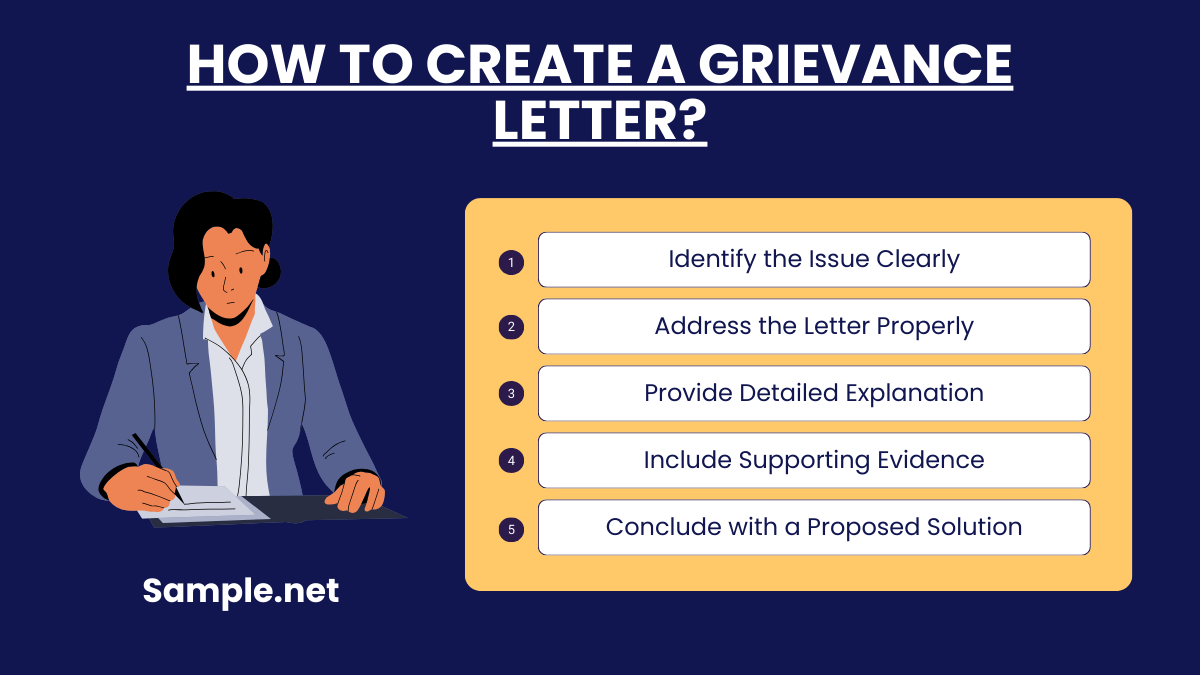
Creating a grievance letter involves a step-by-step approach to ensure clarity, professionalism, and effectiveness. It starts with clearly identifying the issue and addressing the letter properly. A well-written grievance letter should provide a detailed explanation, offer supporting evidence, and suggest a proposed solution. Following a structured format helps convey your concerns effectively to HR or management. Each step should aim to encourage prompt and constructive resolution of the grievance. You can also see more on Letter Of Explanation.
Step 1: Identify the Issue Clearly
Begin by clearly defining the problem you want to raise in your letter. Be specific about what happened, including the exact dates, times, and people involved. Mention how the issue has impacted your work or the work environment. Make sure to use a professional tone while detailing the situation. The clearer your description, the stronger your case will be.
Step 2: Address the Letter Properly
Start the letter with the correct format, including your name, position, and date at the top. Use a formal greeting like “Dear [Recipient’s Name]” to maintain a respectful tone. Address the letter to the HR department, your supervisor, or the appropriate individual responsible for handling grievances. Verify that the recipient’s title and department are accurate. This ensures your letter reaches the right person and receives due attention.
Step 3: Provide Detailed Explanation
In the main body, explain the grievance thoroughly but concisely. Include specific incidents, dates, and locations to support your complaint. Mention any previous attempts made to resolve the issue, along with their outcomes. Ensure your tone remains objective, avoiding personal attacks or accusatory language. Keeping it factual and professional increases the likelihood of a constructive response. You can also see more on Employment Letters.
Step 4: Include Supporting Evidence
Mention that you have attached any supporting documents, such as emails, messages, or witness statements. Describe how this evidence supports your complaint, making your case stronger. Clearly reference these attachments within the letter, so the recipient can easily review them. If witnesses are involved, specify their names and how they are related to the issue. Providing evidence reinforces your credibility and seriousness.
Step 5: Conclude with a Proposed Solution
Conclude the letter by outlining the specific action or resolution you expect. This could be an investigation, a meeting, a formal apology, or a policy change. Politely request a response within a reasonable timeframe, demonstrating your willingness to cooperate. Close the letter with a courteous line, such as “Thank you for addressing this matter.” Sign the letter with your name and contact details for follow-up. You can also see more on Warning Letter.
Writing a grievance letter is an important step in addressing workplace issues. It helps employees convey concerns effectively, promoting transparency and accountability. A well-written grievance letter should be clear, detailed, and solutions-oriented to ensure a fair resolution process. By adhering to a professional format and providing evidence, employees can create a strong case for their concerns. You can also see more on Claim Letters.
FAQS
Who should receive the grievance letter?
It should be addressed to the HR department, a manager, or the relevant authority designated to handle employee grievances.
What details should be included in a grievance letter?
Include details like the nature of the issue, involved parties, dates, and any supporting documents that validate your complaint.
How long should a grievance letter be?
A grievance letter should be concise yet detailed enough to explain the situation clearly. Aim for one to two pages, ensuring all relevant details and evidence are included. You can also see more on Request Letter.
